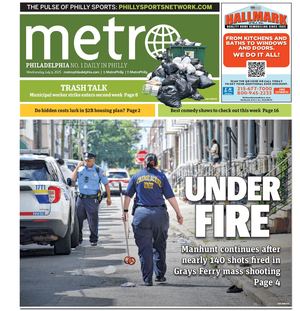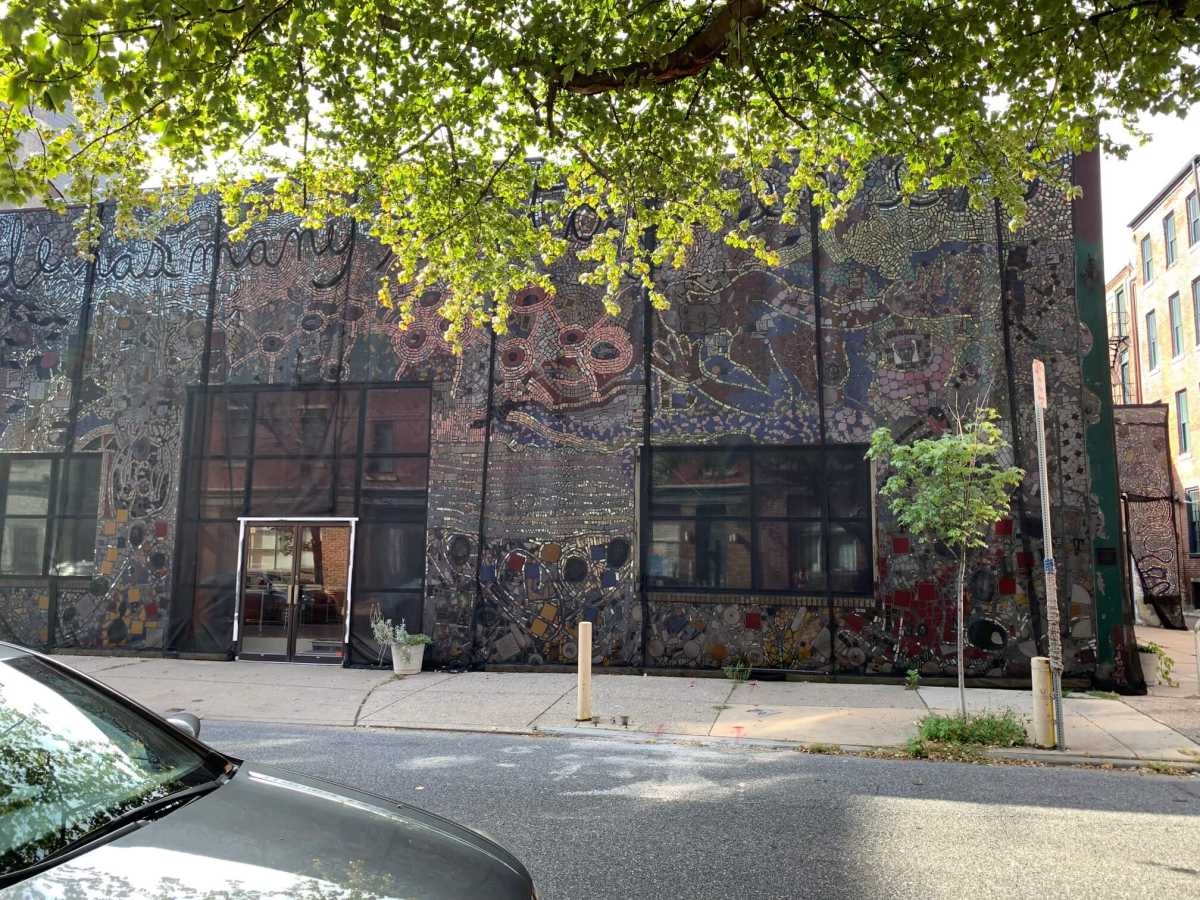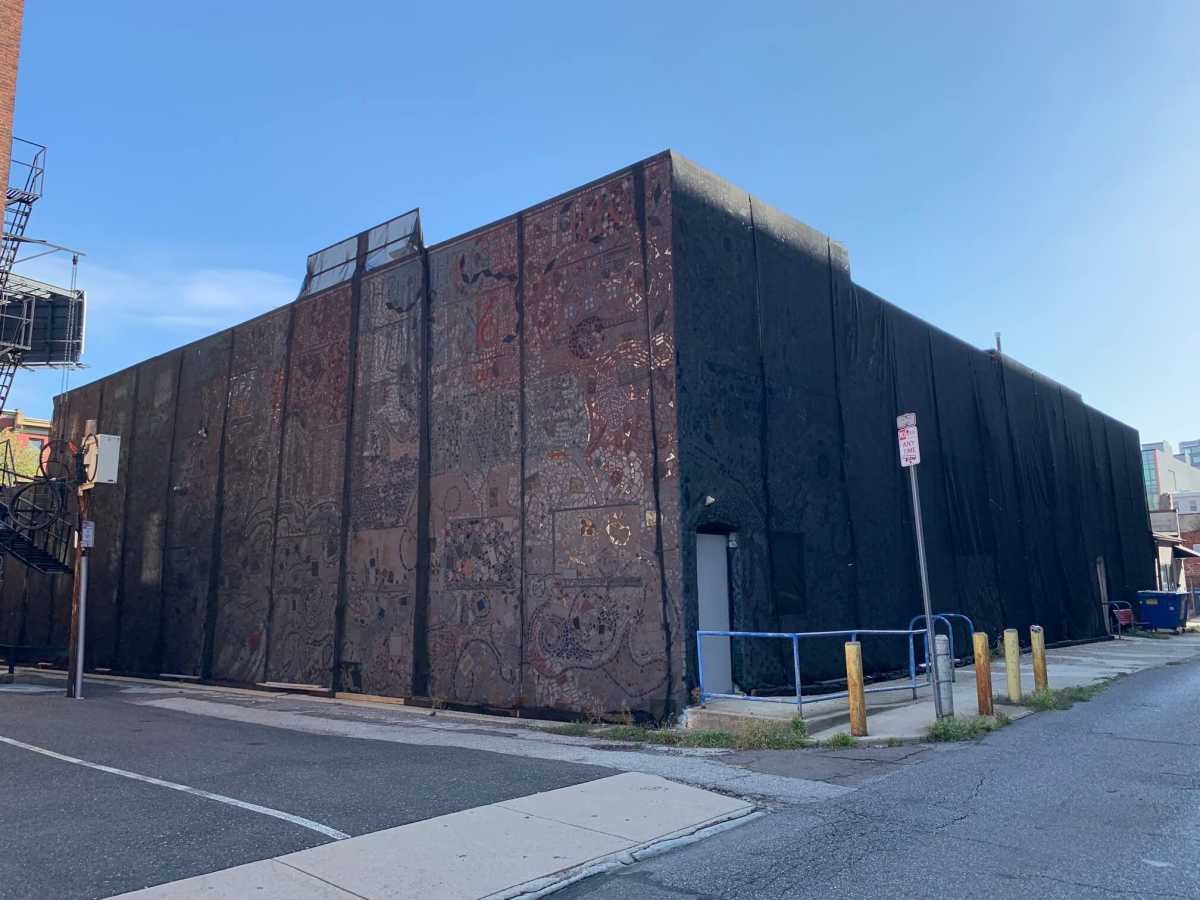Laurel Raczka takes a deep breath when you tell her you want to discuss all things Painted Bride. That’s no surprise.
Ever since 2017, Raczka, the Painted Bride’s longtime executive director, and her board, have been trying to sell the left-of-center performing arts venue, which has resided at 230 Vine Street since 1982, because its original model was no longer sustainable.
The new goal for the non-profit arts center that initially started in 1969 on South Street was to take its programming outside of Old City, to new venues and diverse communities throughout Philadelphia. To that end, Raczka and the board wanted to sell the property.
The sticking point, however, has always been a building-long mosaic —14,213-square-feet — on the Bride’s facade from famed Philly muralist Isaiah Zagar.
Now, in its third attempt to broker a sale for condominium construction at the site (this time, from Groom Investments), a decision from Philadelphia Orphans’ Court Judge Matthew D. Carrafiello, spelled out that the Bride can’t sell its Old City property because of the building’s “irreplaceable” Zagar mosaic — that is, unless a buyer takes the building with the mural’s façade intact. Its potential destruction, in the opinion of Judge Carrafiello, would “all but ensure the destruction of what many individuals consider to be a true treasure.”
“It has been a very frustrating process,” said Raczka. “Our work is to support artists, not be realtor. This is a distraction from doing our work.”
So now, along with appealing Carrafiello’s decision, the Painted Bride is working with Zagar’s Magic Gardens staff, and assessing potential damage to the mosaic so that the Bride brain-trust can get back to business — booking shows again at its Vine Street home starting on Dec. 6, while curating additional shows at venues in West Philly and Germantown starting that same weekend.
“I’m not aware of any decision exactly like this one,” said Zagar’s attorney Jim Moss of the victory and the possible legal precedent. “The law in Pennsylvania requires approval from the Orphans Court for a sale like this to occur with a commercial buyer via a charity. The court turned down the proposed sale because it would result in the destruction of the art work which the court found to be of great value. The judge felt that this is how the public interest would best be served.”
“Obviously it’s very exciting for us and think it was a historic ruling for the city,” said Emily Smith, Executive Director of Philadelphia’s Magic Gardens, currently on location at the Bride doing mural assessment. “We are thrilled to take care of it and can guarantee it will live on for many, many more years. I think in 20 or 30 years so many people will be talking about what a landmark building it is and what it meant that it was saved.”
“It is an interesting compromise,” noted Raczka. “In order to move forward, we had to get approval from the Orphans’ Court — we didn’t get it —and the judge said quite clearly that if it wasn’t for the mosaic, he would have approved the sale. That didn’t happen. And we must go back to our work, our goal, our values.”
With that comes a series of shows, primarily looking to the African-American experience, divided between the Bride’s Old City location (starting with Dec. 6’s “Dreams and Delusions” multi-media exhibition) to that same weekend’s first off-site shows such as trumpeter-composer Hannibal Lokumbe’s “First Breath, Last Sigh,” Dec. 7 at S 38th Street’s Philadelphia Episcopal Cathedral.
Of performing at the Painted Bride’s original location many times throughout its long histry (and hers), as well as during an off-site event, “Block to Block,” in Germantown in January 2020, renowned Philadelphia poet-spoken word artist Ursula Rucker said, “Do we want the Painted Bride to be a mausoleum, a structure of remembrance of how great it used to be when this art and community paradigm thing was poppin’… or do we want Philly to continue being a mentor to other cities…on how to be a leader in the ways of ingenuity and profound change. Not adaptation…leading.”
Of its programming regarding African-American artists, Raczka reminds us that diversity and inclusion has always forever been the Brides’ mission, long before they were buzzwords. Now, the Bride board’s booking goal also includes a focus on younger artists. “That’s the future, young artists, one I feel strongly isn’t being supported right now. Look, the projects not happening here, are about taking the work of the Painted Bride — not a noun or a verb or a place or a person — the values we have developed beyond Old City.”
As for fixing up its legacy location and moving forward with its equally young and adventurous programming, Raczka noted that she is not the devil, and that so many stories have gotten twisted and lost in the mess of the Bride’s potential sale. “It’s complicated,” she said. “Look, I have worked at the Painted Bride for 28 years. If this building means anything to anybody, it’s me. There’s so many unknowns at this point. I just want to go back to supporting artists.”






























